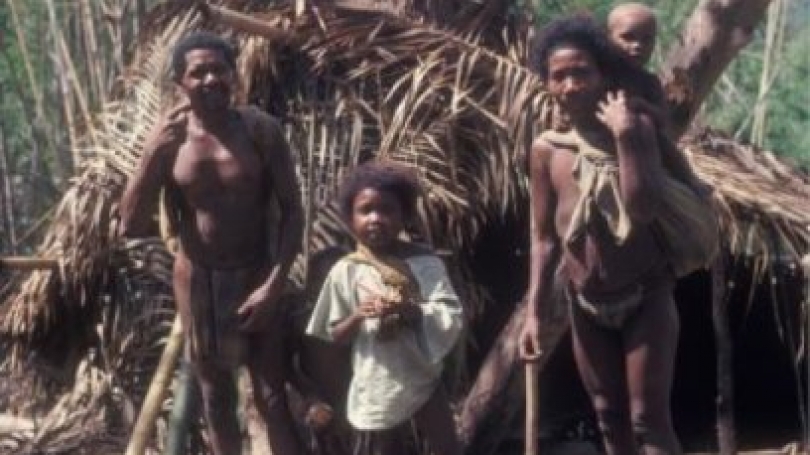
- About
- Undergraduate
- Graduate
- Foreign Study
- Research
- News & Events
- People
Back to Top Nav
Back to Top Nav
Back to Top Nav
Back to Top Nav
Back to Top Nav
Check out this new paper by a team of Dartmouth anthropologists: Hunter-gatherer residential mobility and the marginal value of rainforest patches.
"Hunter-gatherer residential mobility and the marginal value of rainforest patches"
Vivek V. Venkataraman, Thomas S. Kraft, Nathaniel J. Dominy and Kirk M. Endicott
PNAS March 6, 2017. 201617542; published ahead of print March 6, 2017. https://doi.org/10.1073/pnas.1617542114
Edited by Robert L. Kelly, University of Wyoming, Laramie, WY, and accepted by Editorial Board Member James O’Connell January 17, 2017 (received for review November 9, 2016)
Significance
Hunter-gatherers are notable for their high levels of mobility, but the ecological and social cues that determine the timing of camp movements (residential mobility) are poorly understood. Using models from foraging theory, we found that, for one population of hunter-gatherers, camp movements coincided with the point at which resource acquisition declined to a critical threshold level, but before local resources were completely depleted. These results suggest that hunter-gatherer residential mobility is constrained in a predictable fashion by rates of local resource depletion.
Abstract
The residential mobility patterns of modern hunter-gatherers broadly reflect local resource availability, but the proximate ecological and social forces that determine the timing of camp movements are poorly known. We tested the hypothesis that the timing of such moves maximizes foraging efficiency as hunter-gatherers move across the landscape. The marginal value theorem predicts when a group should depart a camp and its associated foraging area and move to another based on declining marginal return rates. This influential model has yet to be directly applied in a population of hunter-gatherers, primarily because the shape of gain curves (cumulative resource acquisition through time) and travel times between patches have been difficult to estimate in ethnographic settings. We tested the predictions of the marginal value theorem in the context of hunter-gatherer residential mobility using historical foraging data from nomadic, socially egalitarian Batek hunter-gatherers (n = 93 d across 11 residential camps) living in the tropical rainforests of Peninsular Malaysia. We characterized the gain functions for all resources acquired by the Batek at daily timescales and examined how patterns of individual foraging related to the emergent property of residential movements. Patterns of camp residence times conformed well with the predictions of the marginal value theorem, indicating that communal perceptions of resource depletion are closely linked to collective movement decisions. Despite (and perhaps because of) a protracted process of deliberation and argument about when to depart camps, Batek residential mobility seems to maximize group-level foraging efficiency.
Read more here!